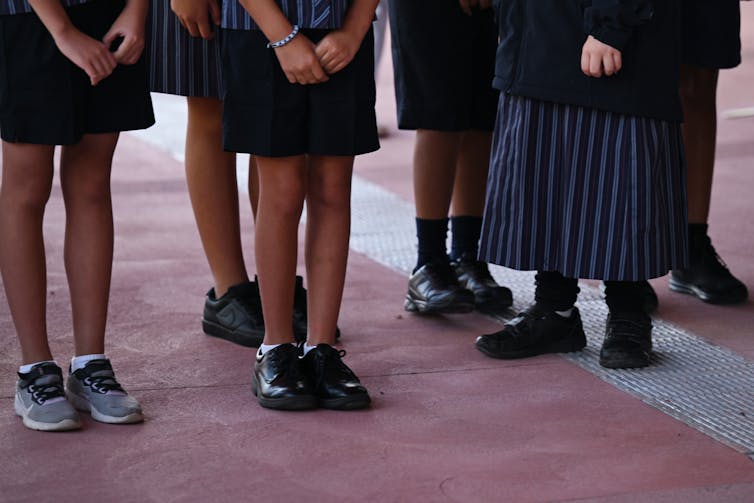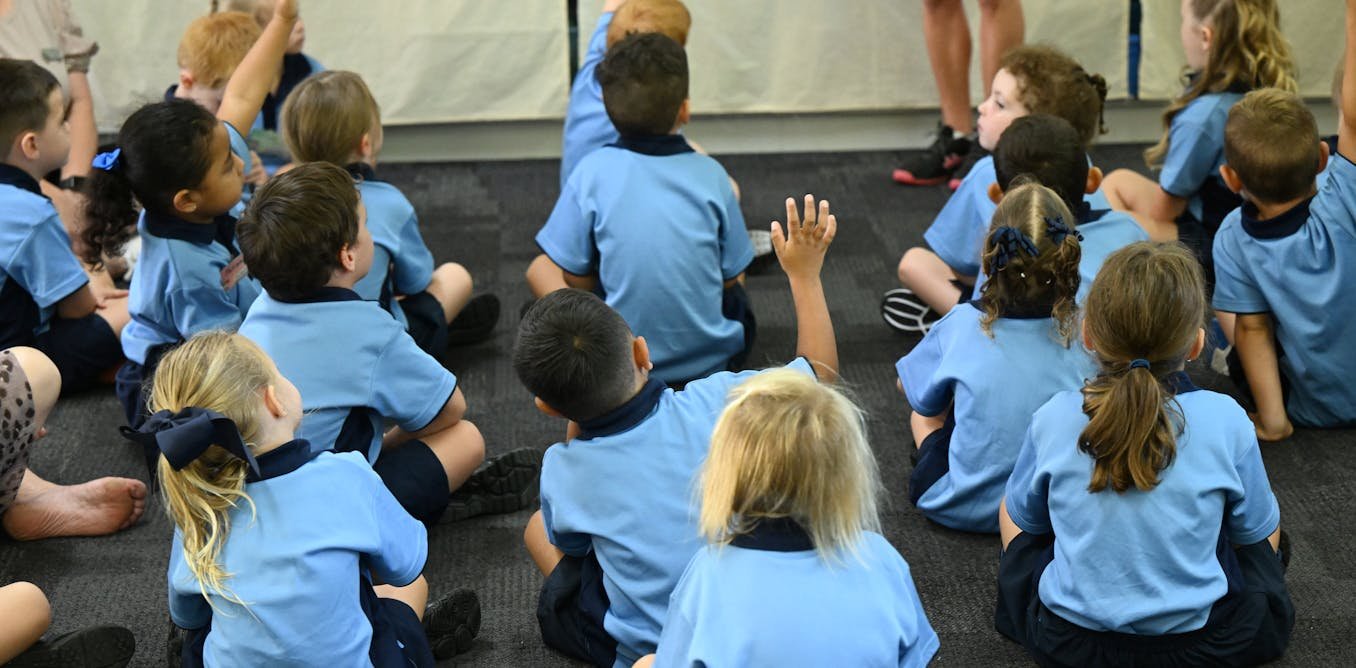The Australian Human Rights Commission wants to see schools address racism, as part of a broader push to address the problem across Australian society.
As it says in a recent report,
People are not born with racist attitudes or beliefs […] Addressing racism in schools is crucial to ensure that victims do not leave education facing lifelong disadvantage, and perpetrators do not enter adulthood believing racist behaviours are acceptable […].
But racism is hardly mentioned in the Australian Curriculum – for example, it is noted in passing in the health and physical education curriculum for years 5 to 8. However, there is no consistent approach across subject areas, or at the state level.
This means teaching about racism is largely left up to individual schools and teachers.
Yet research shows they can be reluctant to speak about these issues with students. This is for a range of reasons, such as worrying they will say the wrong thing.
How should school systems, schools and teachers address racism? Here are four ways.
1. Teach racial literacy
We know children demonstrate stereotyping and prejudice from an early age and students from racial minorities are frequently targets of racism and discrimination at school.
In Australia, racism debates can also involve dangerous and ill-informed opinions.
So we need to start teaching children and young people about racial literacy skills from the first year of schooling. This means they grow up to have the knowledge and language to talk about and confront racism.
Some of these skills include:
-
being able to identify how racism appears in everyday interactions, the media and society more broadly
-
debunking common myths about racism, such as it is a “thing of the past”. Or “everyone has equal access to the same opportunities and outcomes if they work hard enough”
-
understanding the impacts of racism, including on people’s opportunities, education and their health and wellbeing
-
understanding how our own backgrounds, privilege and bias can influence how we confront or don’t confront racism.
Students also need to learn how racism can be structural, systemic and institutional. This means racism is not just about an individuals’ beliefs or actions. Laws, policies, the way organisations are run and cultural norms can all result in inequitable treatment, opportunities and outcomes.

Dean Lewins/AAP
2. Teach students how to react
We also need to teach children how to react when they witness racism with age-appropriate tools.
For both primary and secondary students, the first question should always be, “Is it safe for me to act?”, followed by “Am I the best person to act in this situation?”. Depending on their answers, they could:
-
report the incident to an appropriate adult or person in authority
-
show solidarity with the victim by comforting them and letting them know what happened was not OK
-
interrupt, distract or redirect the perpetrator
-
seek help from friends, a passerby or teacher.
3. Create safe classrooms and playgrounds
Teachers need to ensure classrooms and schools are safe spaces to discuss racism.
This can include:
-
acknowledging how our own experiences, biases and privileges shape our world views
-
clearly defining the purpose of a discussion and the ground rules
-
using inclusive language.
In particular, schools have a unique duty of care for minority students, who need to know they can talk openly about these issues with their peers and teachers without fear or judgement.
This includes addressing sensitive topics like how they might experience or witness racism, the effect it can have on their health and wellbeing and those around them, and the consequences of talking about or reporting racism.

Paul Miller/AAP
4. Develop teachers’ skills
As part of creating safe classrooms, teachers need to be able to confidently discuss tricky topics in an age-appropriate way.
Our work has shown some teachers deny racism or perpetuate racist stereotypes. Others may avoid the topic, worrying they will say or do the wrong thing.
Our current (as yet unpublished) research on anti-racism training with classroom teachers suggests they can increase their confidence to talk and teach about racism if given appropriate, and sustained training.
What needs to happen now?
We need anti-racism education to be an official part of school curricula. To accompany this, we need genuine commitments and modelling from policymakers, school leaders, teachers, parents and carers to address racism in schools.
We need to talk openly about racism in schools. That means explicitly naming it, calling it out, and not getting defensive when it is identified and action is required.

Felecia Phillips Ollie DD (h.c.) is the inspiring leader and founder of The Equality Network LLC (TEN). With a background in coaching, travel, and a career in news, Felecia brings a unique perspective to promoting diversity and inclusion. Holding a Bachelor’s Degree in English/Communications, she is passionate about creating a more inclusive future. From graduating from Mississippi Valley State University to leading initiatives like the Washington State Department of Ecology’s Equal Employment Opportunity Program, Felecia is dedicated to making a positive impact. Join her journey on our blog as she shares insights and leads the charge for equity through The Equality Network.




